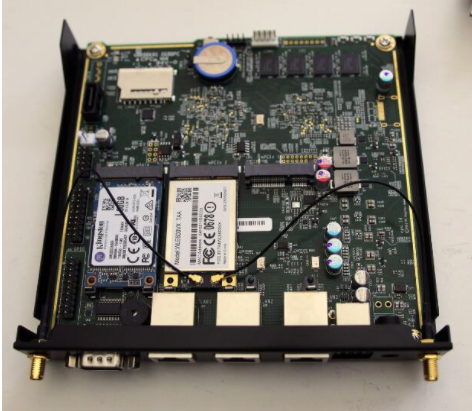1. Anti-static facilities in the PCBA processing production line
Electrostatic protection during PCBA processing is a systematic project. The SMT processing plant should first establish and inspect basic anti-static projects, such as ground wire and floor mats, bench finishing, and environmental anti-static king projects. Because once the equipment enters the workshop, if the environment does not meet the requirements and re-rectification, it will cause a lot of trouble. After the foundation project of the smt patch processing production line is built, if it is a dedicated site for long-term products, anti-static equipment should be configured according to the anti-static requirements of long-term products. If there are multiple varieties of products, anti-static equipment should be configured according to the highest level of anti-static requirements.
Anti-static work area The anti-static area in the production line is prohibited from directly using wooden floors or laying wool, hemp, chemical fiber floors and ordinary floor leather. Floors made of electrostatic conductor materials should be used, such as anti-static raised floors or ordinary floors. Static ground pad, and effective grounding.
The ceiling material in the anti-static area should be anti-static products.

Generally, gypsum board products are allowed to use, and ordinary plastic products are prohibited. Antistatic wallpaper should be used for wall fabrics. In general, plaster paint or lime paint is allowed for walls, and ordinary wallpaper and plastic wallpaper are forbidden. This is the case from the current general usage of PCBA manufacturers.
The anti-static facilities in the production line of the patch processing plant should have an independent ground wire and separate from the lightning protection wire; the ground wire is reliable and has a complete electrostatic leakage system. The workshop maintains a constant temperature and humidity environment, and the general temperature is controlled at ( 25±2) degree Celsius, the relative humidity is 65% 5%; the entrance is equipped with ion wind, the anti-static work area should be marked with regional boundaries, and warning signs should be hung in obvious places. The warning signs should comply with the "Electronic Products Anti-Static Discharge Control Program" 》(GJB1649-1993), ionized air wind bath equipment should be equipped at the entrance of the work area.
The ESD (ESD) sensitive symbol is a triangle with a hand drawn with a trace inside, which indicates that the object is very sensitive to damage caused by ESD.
Two, SMT patch processing factors affecting the quality of reflow soldering
When the placement machine completes the current production plan and converts to another placement plan, we need to reprogram each data of the placement machine in a timely manner, replace the feeder, adjust the substrate transportation organization and positioning table, and adjust the placement first. Change operation tasks, also called reprogramming tasks, so how do we proceed?
Step 1: First, reprogram the system: The placement machine system generally uses two programming methods: manual programming and computer programming. Many low-level placement machines usually use manual teaching programming, and fully active placement machines such as Huaweiguo Chuang placement machine can completely use computer automation for programming.
Step 2: Replace the original production feeder: to reduce the time for the placement machine to replace the feeder, the more common method is to use the "quick release" feeder, and the faster method is to replace the feeder structure to make SMT placement The feeder of each component on the machine base plate type is installed on a separate feeder rack for replacement.
Step 3: Adjust the transmission organization and positioning table: When the size of the replacement substrate plate is not the same as the size of the substrate plate of the current device, the width of the substrate plate positioning table and the transportation organization of the substrate plate should be adjusted. The fully active placement machine can be adjusted actively under program control, and the next-level placement machine can be adjusted manually.
Step 4: Replace the placement head: When the type of components to be installed on the PCBA substrate exceeds the device size of the placement head, perhaps when the substrate type is changed, the placement head of the SMT placement machine is often replaced or adjusted. Most fully active placement machines can actively perform replacement and adjustment of the placement head under program control, while some small-brand placement machines need to perform such operations manually.